Medieval Murder in Toulouse
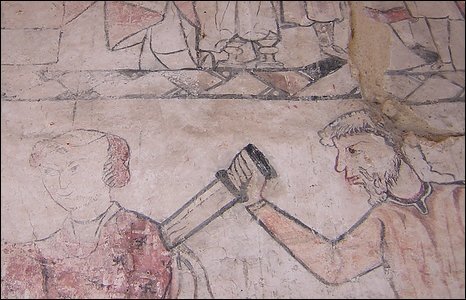 1 Title Slide
1 Title Slide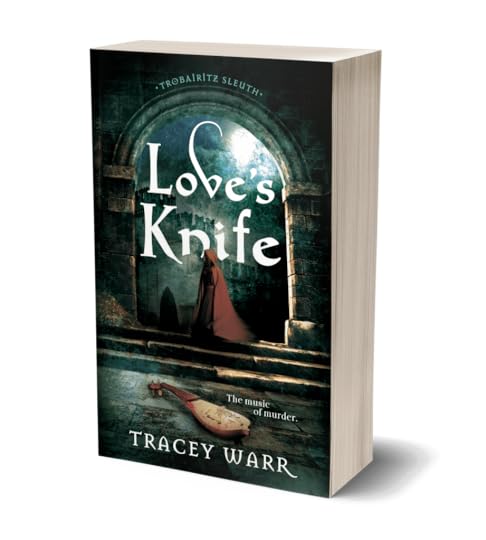 2 Love’s Knife
2 Love’s Knife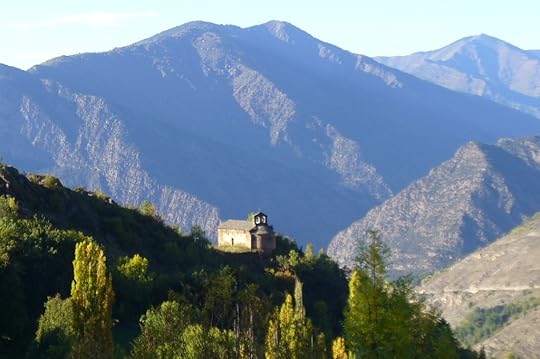 3 Alendo, Catalan Pyrenees
3 Alendo, Catalan Pyrenees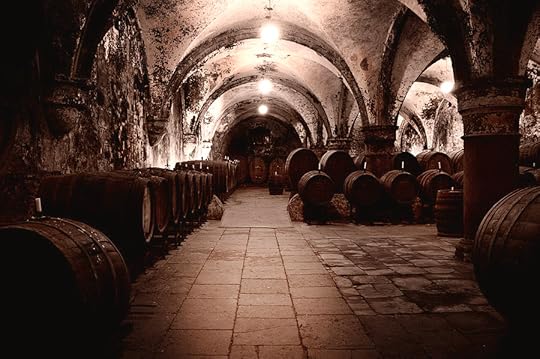 4 Medieval Wine Cellar
4 Medieval Wine Cellar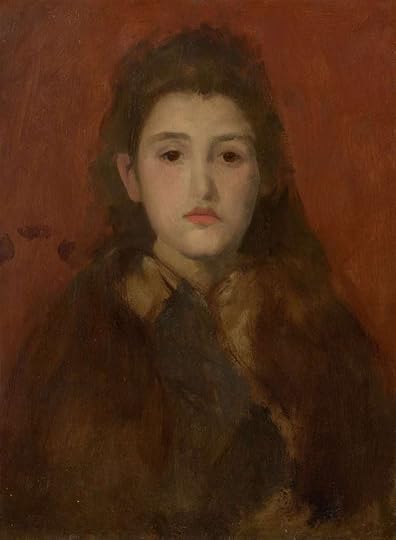 5 Alice Butt by Whistler
5 Alice Butt by Whistler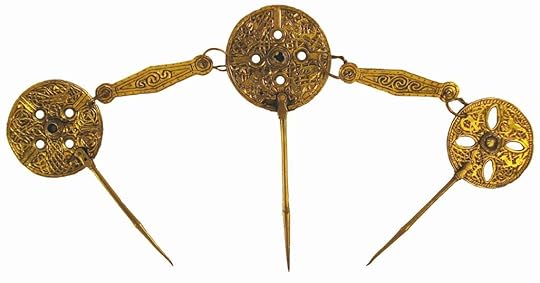 6 Witham Pin, British Museum
6 Witham Pin, British Museum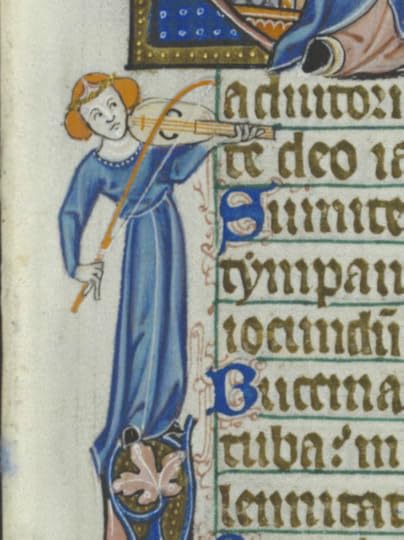 7 Female Vielle Player, Peterborough Psalter
7 Female Vielle Player, Peterborough Psalter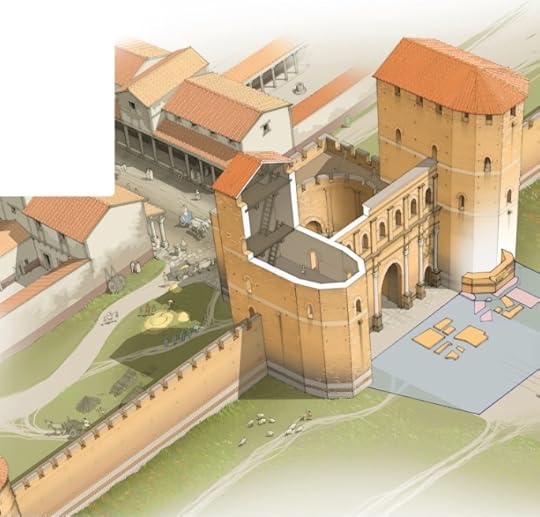 8 Speculative recreation of the early medieval Chateau Narbonnais, the palace of the counts of Toulouse, built into the Roman wall, around one of the gates to the city. Image: Studio Differemmente.
8 Speculative recreation of the early medieval Chateau Narbonnais, the palace of the counts of Toulouse, built into the Roman wall, around one of the gates to the city. Image: Studio Differemmente.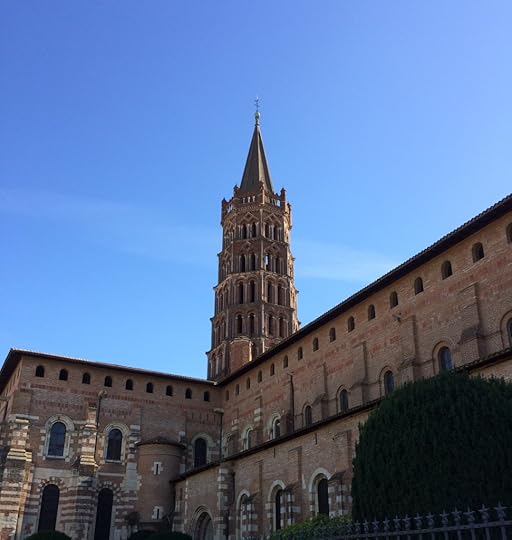 9 Saint-Sernin, Toulouse
9 Saint-Sernin, Toulouse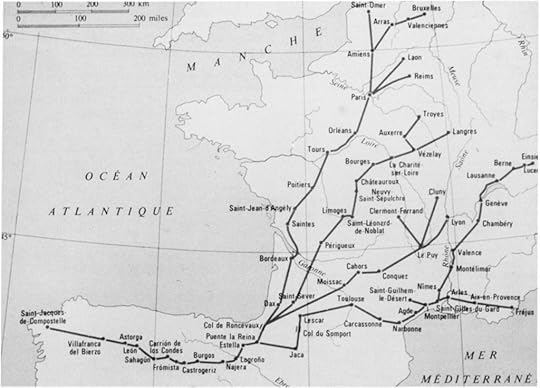 10 The Pilgrim Routes to Santiago de Compostela
10 The Pilgrim Routes to Santiago de Compostela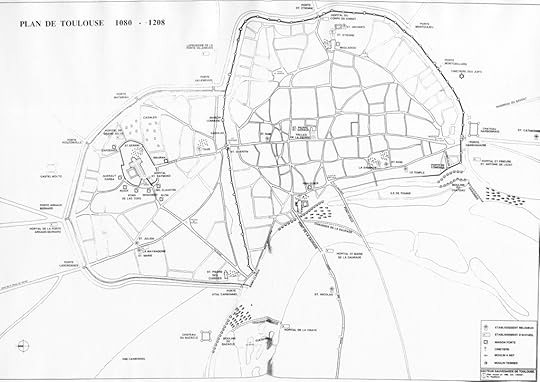 11 Medieval Map of Toulouse, showing floating mills. Musee des Augustins.
11 Medieval Map of Toulouse, showing floating mills. Musee des Augustins.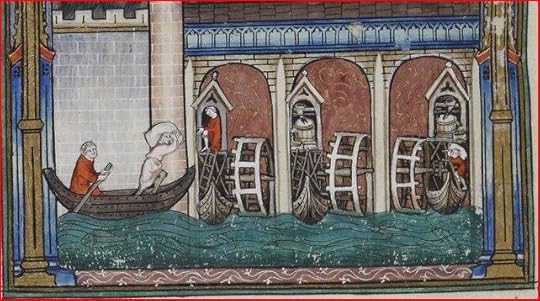 12 Floating mills under a bridge in Paris
12 Floating mills under a bridge in Paris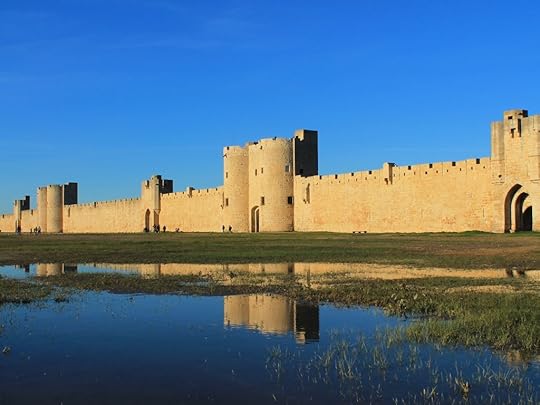 13 Aigues Mortes
13 Aigues Mortes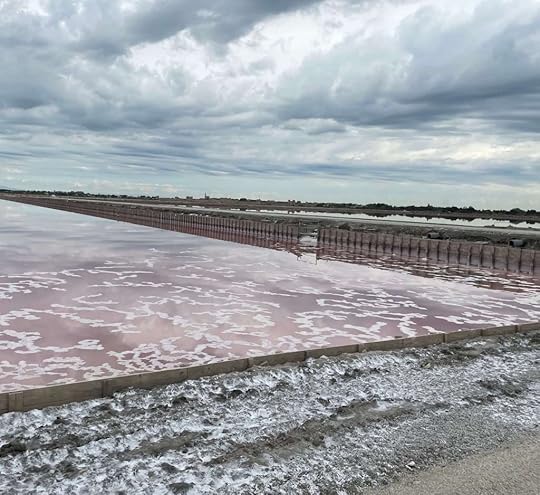 12 Salt Crystals forming, Aigues Mortes
12 Salt Crystals forming, Aigues Mortes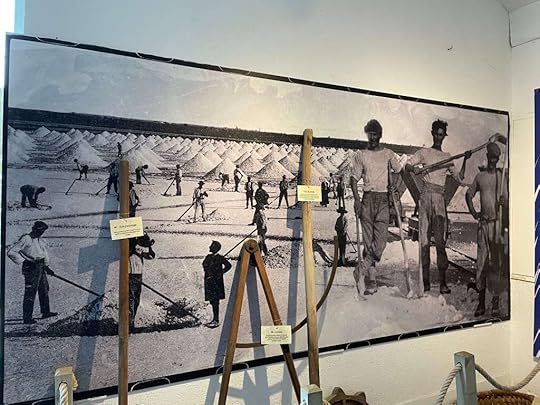 13 Salt Workers Tools, Salt Mounds, Aigues Mortes Salt Museum
13 Salt Workers Tools, Salt Mounds, Aigues Mortes Salt Museum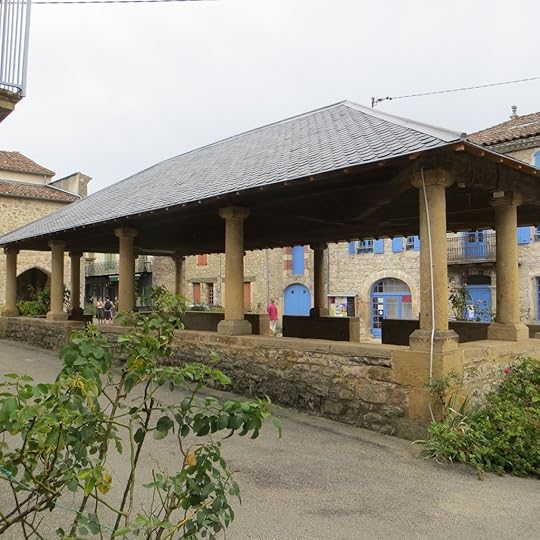 16 Medieval Covered Market at Verfeuil
16 Medieval Covered Market at Verfeuil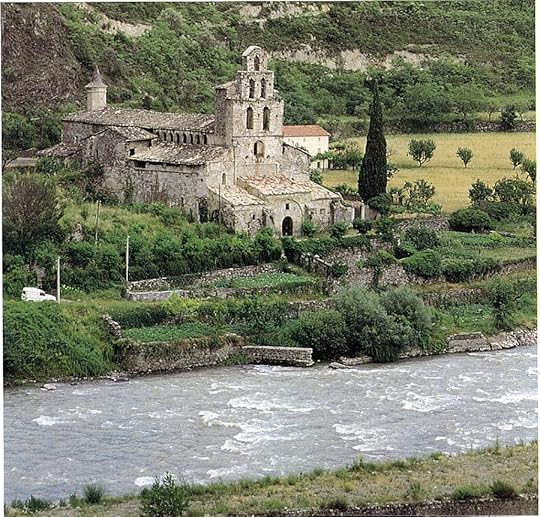 17 Santa-Maria-de-Gerri-de-Sal, Catalan Pyrenees
17 Santa-Maria-de-Gerri-de-Sal, Catalan PyreneesI launched my novel, Love’s Knife, in France last weekend and promised to post the slideshow. Here it is. Images are numbered to coincide with the images in the text of my talk.
Tracey Warr, Writing Medieval Murder
at Library Lit, Parisot Library, 82160 France
Saturday 16 November 2024
[1 title slide]
Love’s Knife [2 slide] has been a long time in the brewing, partly because I was switching from one genre – biographical historical fiction – to another – historical murder mystery, and partly because I had a long writer’s block after the bankruptcy of my original publisher during the COVID lockdowns.
My five previous novels were based on real women I found in medieval chronicles – a trilogy set in Wales and two related but standalone novels set in southern France and Catalonia. I reissued these five books last year with new covers and under my own imprint, Meanda Books.
[3 slide] I first had an idea about the lead character in Love’s Knife, Beatriz the trobairitz (a female troubadour), 10 years ago when I was on a writing residency in Farrera, a village in the Catalan Pyrenees. The chapel across the valley in Alendo was the view from my writing desk. In the end, I didn’t set the first book in this series in the Pyrenees. It just became Beatriz’s backstory, but she will be going there in Book 2, which I’m writing now.
Love’s Knife is mostly set in Toulouse at the end of the 11th century, apart from a few months and chapters when Beatriz goes on the road in the second part of the novel to try to track down the reasons behind the murder. She visits the court of Duke Guillaume IX of Aquitaine in Poitiers. Then she visits the pilgrim abbey of Conques, the town of Uzes where the murder victim had a house, and Aigues Mortes, one of the centres of the lucrative salt trade. Eventually, she returns to Toulouse for the trial of the murderer. Beatriz’s patron and friend is Lady Philippa of Toulouse, the count’s only surviving child and the heiress to the city and county. Beatriz and Philippa are friends with a third young woman, Anna, who has been Philippa’s maid since childhood and who is deaf. My grandfather was deaf and was a great inspiration to me as a reader and writer. I wanted to write a deaf character who would be a contrast to Beatriz’s focus on music and sound. Whilst Beatriz and Anna are my inventions, Philippa of Toulouse and many of the people in the Toulouse court are based on real historical people. I won’t say more about the plot to avoid spoilers. The murder takes place at the beginning of the novel in the castle’s wine cellar [4 slide].
Now that I’m starting to write book 2, I’ve been thinking about how one gets from a wordcount of 0 to a wordcount of 90,000, how one goes from a blank sheet of paper to a manuscript, a story peopled by imagined characters and events. I draw a lot on images, old maps and museum objects when I’m writing.
The nothing to story for me seems to occur through collecting various elements in a research process, then those elements start to coalesce and resonate for me.
[5 slide] I began with the face of Beatriz – which I based on this portrait of a street girl by Whistler and with the murder weapon [6 slide] – this triple pin brooch, which is in the British Museum. Then other things began to attach themselves to that inspirational core and become part of the story.
Beatriz is a jograresa to the trobador Imbert at the court of Toulouse. A jograresa was a performer – a dancer and singer. But Imbert has taught Beatriz to play instruments and she has learnt the complex art of composing troubadour lyrics and aspires to be recognised as a trobairitz. There were real female troubadours. There are around 21 named trobairitz with poems preserved in the manuscripts. That compares to some 400 named male troubadours. Between 26 and 46 songs have been attributed to women.
[7 slide] I had to give Beatriz a main instrument and decided on the vielle – an early version of the violin.
[8 slide] I came across speculative recreations of Chateau Narbonnais, the medieval palace of the counts of Toulouse, which were very important for imagining the spaces Beatriz was moving around in.
[9 slide] Saint-Sernin in Toulouse was being built in 1093 when the novel takes place. It was one of the main pilgrim centres on the route to Santiago de Compostela and is significant to the story.
[10 slide] Beatriz goes to Saint-Sernin and then to Conques to find out about the conflicts going on over the pilgrim routes, which were moneyspinners. The powerful monastery of Cluny was in competition with the pope over control of some of the routes. Beatriz is trying to find out if this was the motive for the murder.
Beatriz’s on-and-off lover Lluis is a sculptor working at Saint-Sernin. His drawing skills become important in Beatriz’s sleuthing. He sketches the crime scene and the body for her to study. Part of my research for the novel was attending a seminar on why people kill presented by a former London homicide detective, Steve Keogh. Obviously what was available to a medieval sleuth differed, but I tried to think about the medieval equivalents of crime scene photos, forensics and murder books. Keogh’s analysis of murder motives and psychology were very important for me in developing my characters and the unfolding of the story.
[11 slide] Another element in my research that fascinated me were the floating flour mills on the Garonne depicted on the medieval map. I found out more about these mills and used them in a chase scene. Floating mills were invented in Rome around 537 AD. [12 slide] In Paris, they operated under bridges, but they could also operate in open water. The count of Toulouse owned the mills near Château Narbonnais. Count Raymond V is recorded granting residents of the city the right to install twenty-four mills and build a causeway near Château-Narbonnais in 1183, so their appearance in my novel is a little anachronistic. The chateau mills were initially naves, boats moored to the banks and equipped with paddle wheels to drive the millstones. During floods, they could be towed to safety. Their proliferation tended to hamper trade on the Garonne. In 1192, the count ordered that the mills be changed to burrows, which were built on stilts. The wheels were probably horizontal. A flood in 1346 destroyed all the Château Narbonnais mills. In later centuries, the mills were also used for fulling, for sawmills and for paper milling. Most medieval mills were owned by the feudal lord and peasants paid a fee to the miller to grind their grain, which the miller collected on behalf of the lord. However, in Toulouse, the counts leased the mill sites to entrepreneurs to build and run. By the twelfth century, the mills were owned by co-proprietors with shares in the investment and profits.
Guillaume of Aquitaine’s poetry and personality were also important for my story. He later becomes the husband of the real historical character of Philippa of Toulouse. He appears in two chapters in this novel and will reappear in later books in the series.
[13 slide] Thinking about motives for the murder, I was very interested in the salt trade, which was so important in the Middle Ages and I visited the salt lakes at the walled city of Aigues Mortes. This is an extraordinary pink, purple, white, blue landscape in the Camargue with flamingoes and white horses. [14 slide, 15 slide] Obviously this photo is not medieval! but some of the tools and methods used by the salt workers would not have changed significantly.
I was interested too in the medieval covered market places, such as this one in Verfeuil. [16 slide] In particular, I was interested in the grain and salt measures that were built into the walls of some of the markets.
In addition to building the characters of Beatriz, Anna, and Philippa and others at the Toulouse court, including Philippa’s uncle Count Raimon of Saint Gilles; her cousin, Bertrand; and Abbot Frotard the papal legate, (all real people), two minor characters, Roger and Mafalda, took on a life of their own and insisted on becoming more than minor characters.
[17 slide] In the next book, Beatriz and many of the other characters travel into the Pyrenees. The salt trade is important again in relation to the monastery of Santa Maria de Gerri and the village of Gerri de Sal, with its salt ponds. The pilgrim routes to Compostela are important again and I’m also drawing on my visit to Sant Pere del Burgul 10 years ago and this fresco of Lucia de la Marca, countess of Pallars Sobira, who was the great-aunt of Philippa of Toulouse. These medieval grave markers are from a village called Tirveu, near my writing residency in Farrera and are for a bellmaker, a blacksmith and a houndsman.
If you’d like to know more about my fiction and research you can sign up for my free quarterly newsletter, Just Meandering, and for my occasional research posts Trobairitz Sleuth.



